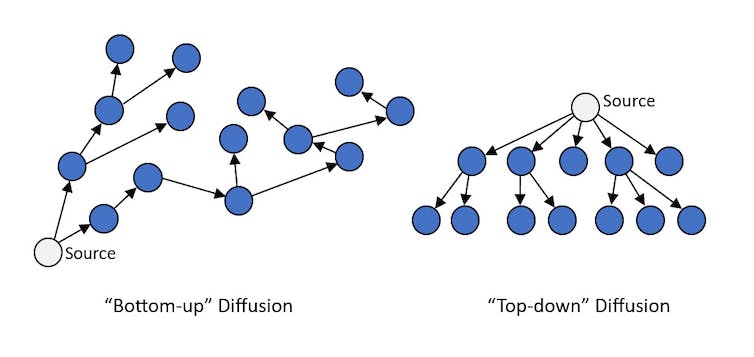The House subcommittee on National Security, the Border, and Foreign Affairs met in July 2023 to discuss affairs so foreign that they may not even be of this world. During the meeting, several military officers testified that unidentified anomalous phenomena – the government’s name for UFOs – pose a threat to national security.
Their testimony may have raised eyebrows in the chamber, but there’s still no public physical evidence of extraterrestrial life. In fact, most UFO sightings have earthly explanations, from tricks of the light to weather balloons.
Whether or not these testimonials hold any grains of truth, some scholars argue that simply by listening for signs of extraterrestrials, we’re already engaging in the first phase of contact with alien life.
These four articles from our archives dive into what went down during the subcommittee hearing, why perceived UFO sightings usually have human explanations, and how humanity can learn from history when it comes to engaging with extraterrestrials.
1. Whistleblower allegations
The most interesting testimony of the July 26 subcommittee hearing came from ex-Air Force Intelligence Officer David Grusch, who claimed that the U.S. has nonhuman biological material recovered from a UFO crash site. The Pentagon has denied this claim, and it has denied the existence of any program designed to retrieve and reverse-engineer crashed UFOs.
All witnesses at the hearing advocated for more government transparency around reports of UFOs. Intelligence agencies and the Pentagon currently steward this data, most of which is not public. While having access to more data may help understand what’s going on, as the University of Arizona’s Chris Impey put it, “the gold standard is physical evidence.”
À lire aussi :
Whistleblower calls for government transparency as Congress digs for the truth about UFOs
2. Sociological explanations
Again, while no physical evidence has been made public, anyone surfing the internet can see plenty of alleged UFO videos, photos and stories. Barry Markovsky, from the University of South Carolina, is a sociologist of shared beliefs and misconceptions who explained why UFOs seem to captivate the public every few years.
People want explanations for ambiguous situations, and they’re easily influenced by others. Social media enables a concept called bottom-up social diffusion. Say one user posts a blurry video claiming it depicts a UFO. It’s easy for that user’s network to see and repost the video and so on, until it goes viral. Then, when organized institutions like news outlets or government sources publish UFO-related information, that’s called top-down social diffusion.

The left image shows bottom-up diffusion, in which information spreads from person to person. The right shows top-down diffusion, in which information spreads from one authority.
Barry Markovsky
“Diffusion…


